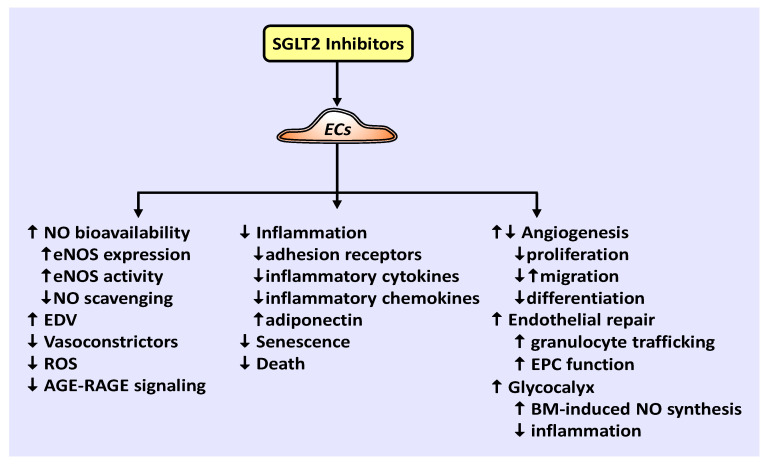Figure 1.
Effect of SGLT2 inhibitors on EC function. SGLT2 inhibitors increase NO bioavailability by elevating eNOS expression and activity, and/or limiting NO scavenging, thereby promoting endothelium-dependent vasodilation (EDV). In addition, SGLT2 inhibitors block the generation of vasoconstrictors and ROS, the activation of the AGE-RAGE signaling pathway, and EC death and senescence. They also attenuate inflammation by inhibiting the endothelial expression of adhesion receptors, inflammatory cytokines and chemokines, while enhancing the expression of adiponectin. Furthermore, SGLT2 inhibitors stimulate endothelial repair by improving EPC function and increasing the trafficking of granulocytes to injured arteries. SGLT2 inhibitors also preserve the structural integrity of the endothelial glycocalyx, resulting in sustained biomechanical (BM)-induced NO synthesis and a reduction in inflammation. Finally, SGLT2 inhibitors suppress EC proliferation and differentiation, but elicit variable effects on angiogenesis and EC migration.

